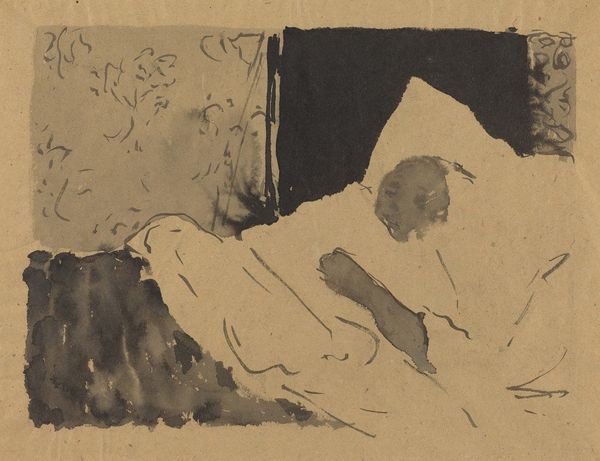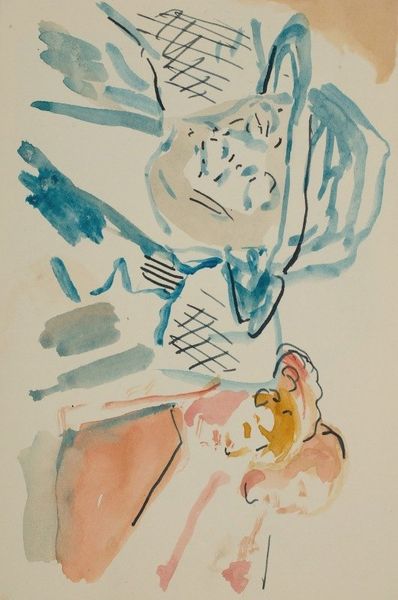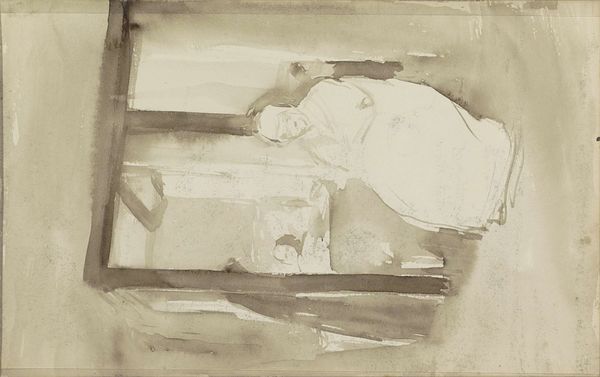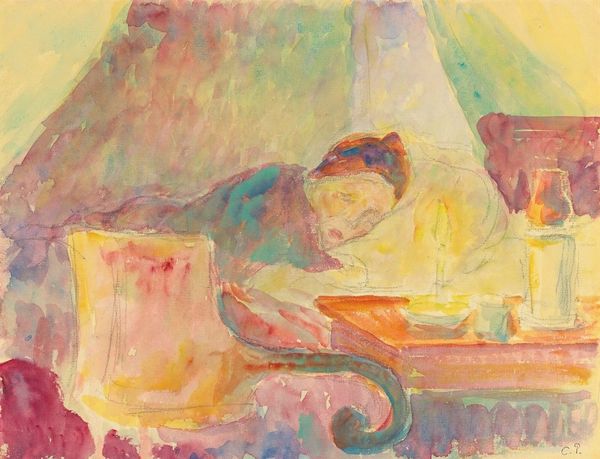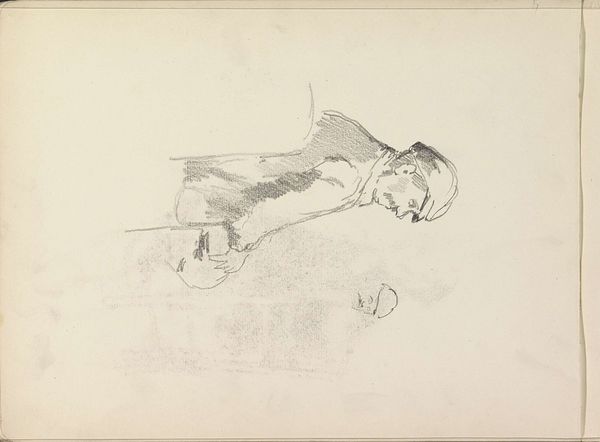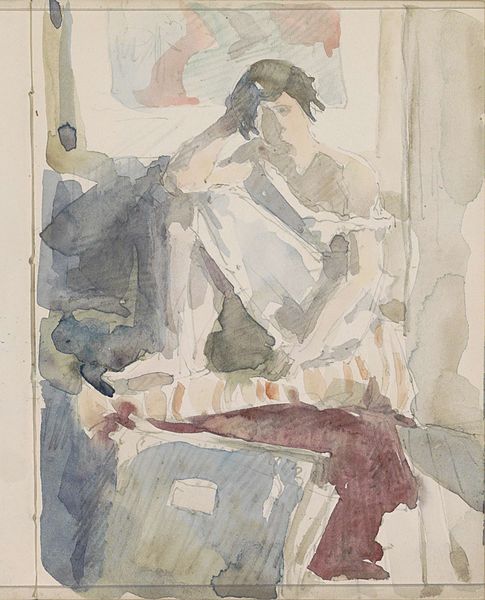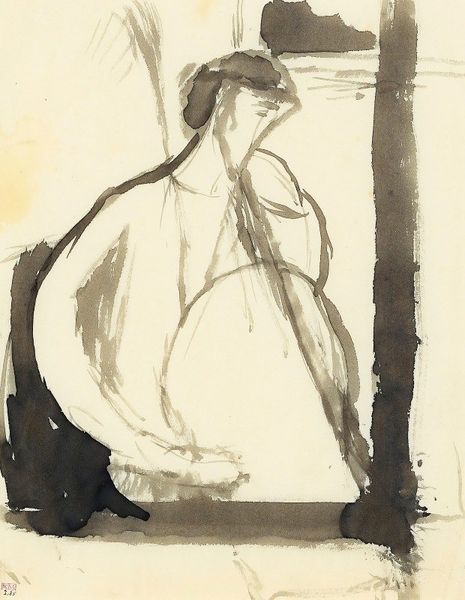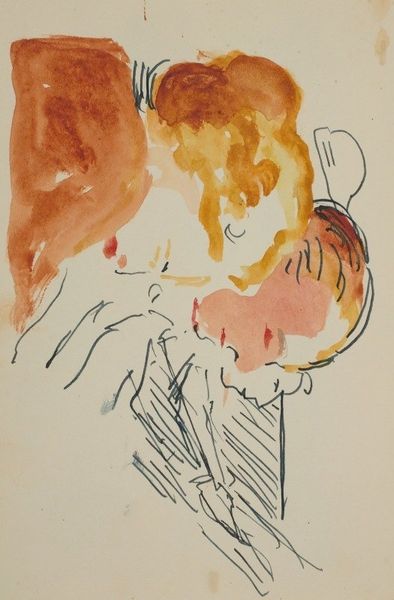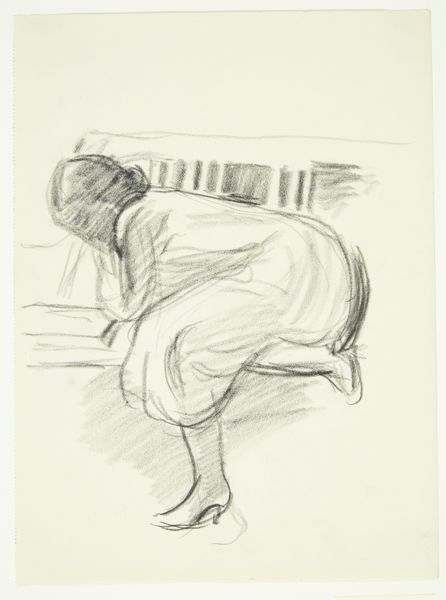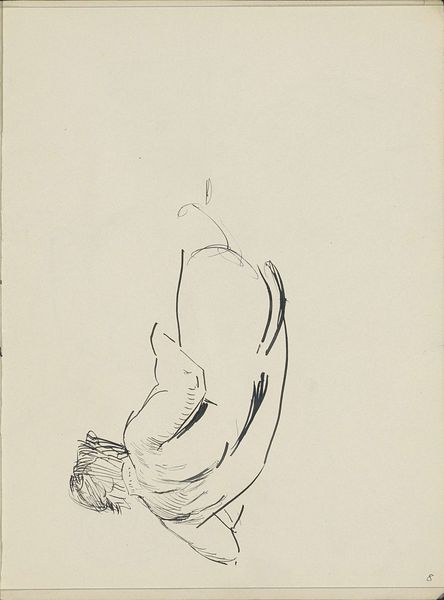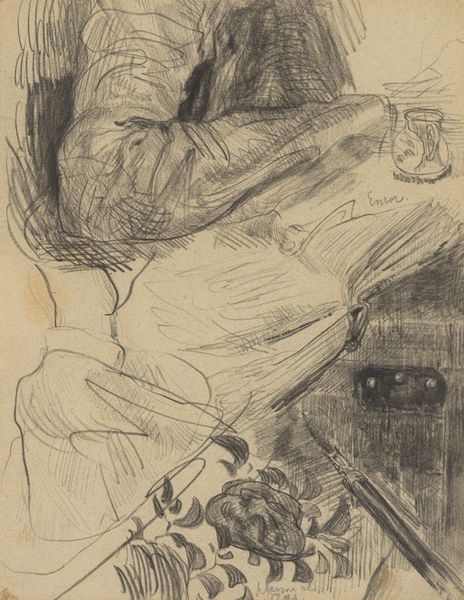
painting, watercolor
#
portrait
#
water colours
#
painting
#
watercolor
#
expressionism
#
line
#
nude
#
watercolor
Copyright: Public Domain: Artvee
Curator: Here we have Edvard Munch’s “Akt med kne på seng,” which translates to “Nude with knee on bed,” likely created between 1918 and 1920. Munch, of course, is a pivotal figure in the Expressionist movement. The work uses watercolor on paper. Editor: Wow, it's like a dream barely remembered. Washed out, fading... you almost miss it, this ephemeral figure. I see sadness but a little bit of hope because of all the different colors that kind of wash out to me together, or at least a potential for hope? Curator: Indeed. The use of watercolor lends itself to that fleeting quality. We have to remember Munch's complex relationship with mental health and the pervasive influence of societal constraints and expectations on individuals, particularly women in the late 19th and early 20th centuries. Do you feel a sense of that echoed here? Editor: Oh, totally! There's an incredible vulnerability in it. The loose lines, almost hesitant, remind me of trying to capture a feeling before it disappears, a secret whispered too quietly to fully understand. Like a ghost made of sunlight! Curator: Right. That interpretation aligns with feminist art history perspectives, particularly when considering the male gaze, and how Munch's portrayal both reflects and perhaps critiques that gaze by emphasizing fragility and transience. The positioning of the body, almost hunched, adds to this sense of vulnerability. Editor: I never would have thought about it like that. Thinking of him, or his work in that context makes me reconsider my previous impression of his sadness. Is she sad, or is Munch revealing something bigger about the expectations around women at the time, how society may have confined or even oppressed them? I hadn't even thought about it that deeply before you pointed that out. Curator: Exactly. Through an intersectional lens, we can unpack so much more about power dynamics, societal norms, and even resistance embedded within what might initially appear as simply a nude study. It allows for more expansive readings. Editor: Now I see shadows I hadn’t noticed, stories barely visible… thank you for helping see, hear and feel the work more vividly than I ever thought possible. Curator: The beauty of engaging with art history and contemporary theory is precisely that – it constantly re-envisions our understanding.
Comments
No comments
Be the first to comment and join the conversation on the ultimate creative platform.
